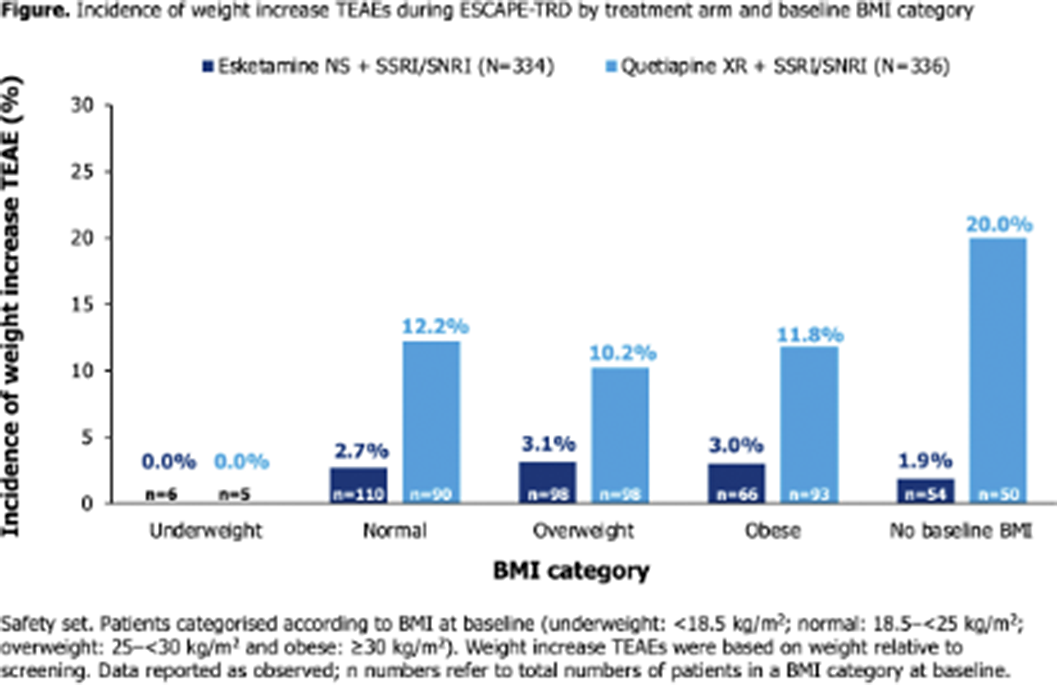No CrossRef data available.
Published online by Cambridge University Press: 27 August 2024
In ESCAPE-TRD, esketamine nasal spray (ESK-NS) significantly increased the probability of remission at Week (Wk)8 and being relapse‑free through Wk32 after remission at Wk8 versus (vs) quetiapine extended-release (QTP-XR), in patients (pts) with treatment resistant depression (TRD). Safety data were consistent with established profiles of each treatment, with no new safety signals identified (Reif et al. DGPPN 2022; P-01-04).
To explore weight changes and their impact on treatment discontinuation in ESCAPE-TRD.
ESCAPE‑TRD (NCT04338321) was a randomised, open-label, rater-blinded, phase IIIb trial comparing efficacy and safety of ESK-NS vs QTP-XR in pts with TRD. Safety analyses were conducted on pts who received ≥1 dose of study treatment. Treatment-emergent adverse events (TEAEs) were defined as occurring at or after the first dose of study treatment and within 14 days/30 days (non-serious/serious) of the last dose. A ≥7% increase/decrease in weight from screening was considered for evaluation as a TEAE. Weights were measured and are reported as observed, with no missing data imputation.
336 and 340 pts were randomised to ESK-NS and QTP-XR; 334 and 336 were included in the safety population. Over the 32-week study, a TEAE of weight increase was reported in fewer pts treated with ESK-NS than QTP-XR (9 [2.7%] vs 42 [12.5%]), leading to treatment discontinuation in 0 vs 6 (1.8%) pts, respectively. Incidences of weight increase TEAEs were balanced across pts categorised as normal, overweight or obsese by baseline body mass index (BMI; Figure). A weight decrease TEAE was reported in 7 pts (2.1%) in the ESK-NS arm vs 0 pts in the QTP-XR arm. Mean (standard deviation [SD]) weight at baseline was 76.4 (16.2) kg (ESK-NS; n=334) vs 79.1 (16.9) kg (QTP-XR; n=336). At Wk32, mean weight was maintained (76.5 [16.3] kg) in ESK-NS treated pts (n=249; mean [SD] change from baseline: 0.1 [4.0] kg) and increased (80.7 [15.6] kg) in QTP-XR treated pts (n=203; mean [SD] change from baseline: 2.5 [5.1] kg).
Image:

Increase in weight was uncommon with ESK-NS; weight increases were more common with QTP-XR and resulted in more treatment discontinuations. Weight increase was independent from baseline BMI.
We thank the patients who participated. Funding: Janssen, medical writing: Costello Medical, UK
None Declared
Comments
No Comments have been published for this article.